Search
Search Results

Image
Celtic Parade Helmet
A Celtic parade helmet in bronze and iron covered in gold with coral inlay, c. 350 BCE. Found buried in a cave in Agris, western France. It is a fine example of the use of vegetal motifs in ancient Celtic art. (Bernisches Historisches Museum...
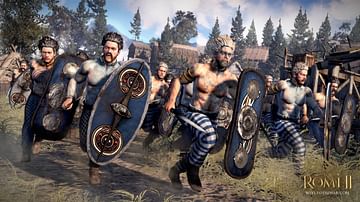
Image
Painted Celtic Warriors
An artist's impression of how Celtic warriors may have looked in battle. Roman writers describe such warriors as wearing blue paint, having long hair dyed blond using lime and clothing with distinctive patterns.
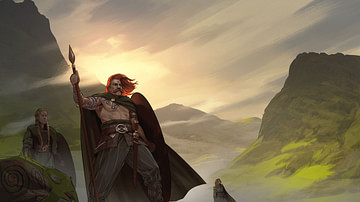
Image
Celtic Warriors
Artist's impression of Celtic warriors standing on a hill. Created by Amplitude Studios for the video game Humankind.
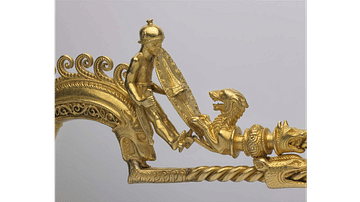
Image
Celtic Warrior, Braganza Brooch
A detail of the Braganza Brooch showing a Celtic warrior with shield and helmet. Iberian, gold, 250-200 BCE. Length: 14 centimetres.
The British Museum, London.
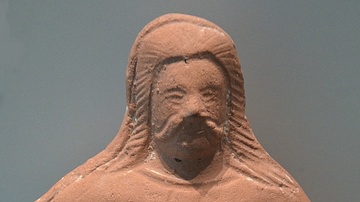
Image
Celtic Warrior
Terracotta statuette of a warrior carrying a Celtic shield. He is depicted with long hair, drooping moustache, trousers and a tunic. 2nd century CE. (Ashmolean Museum, UK)
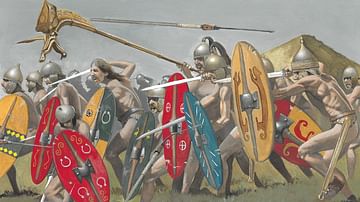
Image
Artist's Impression of Celtic Warriors
Artist's impression of ancient Celtic warriors by Zvonimir Grbasic. Copyright, republished with permission from Ancient History Magazine / Karwansaray Publishers.
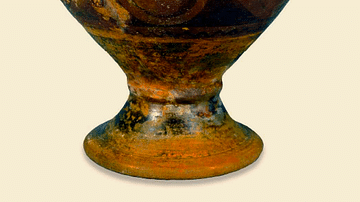
Image
Celtic Pottery Vessel
A Celtic pottery vessel from La Marne, France. It shows typical Celtic design features with its curvilinear shape and motifs in black on a red background. 4th century BCE. Height: 30 cm. (British Museum, London)

Video
Ancient Celtic History, Origin and Culture
The Ancient Celtic people were never a unified empire, but were individual and complex tribes that shared the Celtic language, and through the trade of goods and ideas, shared similarities in art, warfare, religion and burial practices. The...
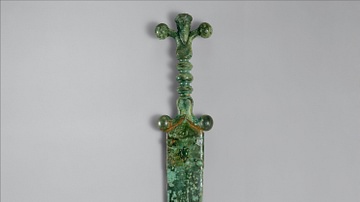
Image
Anthropomorphic Celtic Sword
A Celtic sword and its scabbard (now amalgamated) from c. 60 BCE, associated with the La Tene culture. The sword's hilt is decorated with the head of a warrior, geometrically reduced like many other examples of Celtic art. The sword and its...

Video
The Celtic Origins of Halloween
In this documentary we explore another one of the Misunderstood Moments in History which has to do with the origin of Halloween. This dates back to the Celtic traditions from the bronze age Hallstatt and later La Tene culture. We discuss...